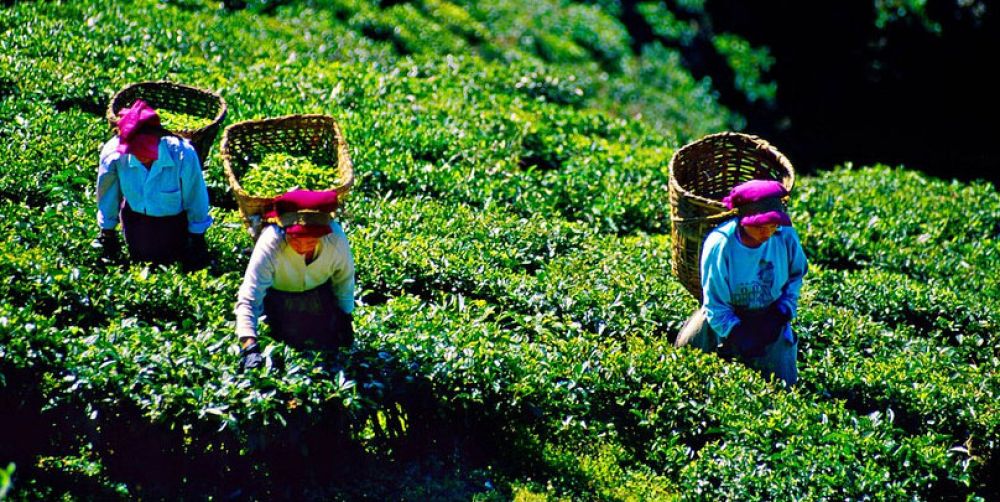Happy Valley Tea Estate: A Journey into the Heart of Darjeeling’s Tea Legacy

Strong 8k brings an ultra-HD IPTV experience to your living room and your pocket.
Darjeeling, known for its world-famous tea, is home to several tea estates that have been producing the finest tea for centuries. Among these, the Happy Valley Tea Estate stands out not only for its premium tea but also for its historical significance, lush landscapes, and cultural richness. Located just a few kilometres from Darjeeling town, Happy Valley is more than just a tea plantation; it's a reflection of the region's deep connection with tea, its heritage, and the natural beauty of the Himalayan foothills.
History of Happy Valley Tea Estate
The Happy Valley Tea Estate was established in 1854, making it one of the oldest tea gardens in Darjeeling. The estate was originally set up by David Wilson, a British tea planter, and was known as Wilson Tea Estate. Over the years, it changed ownership multiple times but continued to grow as one of the leading producers of Darjeeling tea. In the 20th century, the estate was renamed Happy Valley, a name that resonated with the charm and beauty of the location. Today, it covers over 400 acres of land, nestled at an altitude of around 2,100 meters, making it one of the highest tea estates in the world.
Darjeeling Tea: A Global Treasure
Darjeeling tea is often referred to as the “Champagne of Teas” due to its unique flavour and aroma. The cool climate, high altitude, and fertile soil of Darjeeling contribute to producing tea that has a distinct muscatel flavour, highly sought after by tea connoisseurs around the world. The tea produced at Happy Valley Tea Estate follows this rich tradition, with a commitment to quality that has helped the estate maintain its global reputation.
The estate primarily produces two types of tea: black tea and green tea. The black tea is known for its bright colour and strong flavour, while the green tea offers a lighter, more delicate taste. Both varieties are grown using traditional methods, with minimal use of chemicals or pesticides, ensuring that the tea is organic and environmentally sustainable.
Exploring the Tea Estate: A Visitor’s Experience
A visit to the Happy Valley Tea Estate offers a unique opportunity to delve deep into the tea-making process. The estate has become a popular tourist destination, where visitors can tour the tea gardens, witness the plucking of tea leaves, and observe the intricate steps of tea processing. The tea factory, which dates back to the early days of the estate, is still operational and offers guided tours that explain how the fresh green leaves are transformed into the fine Darjeeling tea that is enjoyed worldwide.
The tour begins with a walk through the lush tea gardens, where visitors can see rows of tea bushes cascading down the slopes of the hills. The sight is mesmerizing, with the misty Himalayan peaks serving as a backdrop. Depending on the season, visitors can also witness the tea pluckers at work, skillfully picking only two leaves and a bud from each tea bush.
The next stop is the tea factory, where the freshly plucked leaves are withered, rolled, fermented, dried, and sorted. The factory still uses some of the traditional machines from the early 20th century, offering a glimpse into the history of tea processing. Visitors are often surprised to learn how much care and precision go into every step of the process to ensure that each batch of tea meets the high standards associated with Darjeeling tea.
Tea Tasting at Happy Valley
One of the highlights of visiting Happy Valley Tea Estate is the tea-tasting session. After the factory tour, visitors are invited to sample a variety of teas produced at the estate. This is where you can truly appreciate the differences between first flush, second flush, and autumnal tea. First-flush teas are harvested in the spring and are light and floral in flavour, while second-flush teas, harvested in the summer, have a more robust, muscatel flavour. The autumnal teas, harvested in the fall, are smooth and mellow.
For tea enthusiasts, this is an invaluable experience, as it allows you to compare the subtle nuances between different batches of tea. The tea-tasting session is often led by a tea expert who explains the flavour profiles and characteristics of each type of tea, helping visitors understand why Darjeeling tea is considered one of the finest in the world.
The People Behind the Tea
Behind every cup of tea from Happy Valley are the hardworking tea pluckers and factory workers who have dedicated their lives to this craft. The estate employs several hundred workers, most of whom live in the surrounding villages. Many of the workers come from families that have worked in the tea gardens for generations, passing down the skills and knowledge needed to produce high-quality tea.
The estate is committed to the welfare of its workers, providing housing, medical care, and education for their children. This sense of community is one of the reasons why the estate has continued to thrive for over 150 years.
The Best Time to Visit Happy Valley
The best time to visit Happy Valley Tea Estate is during the tea-plucking season, which runs from March to November. This is when the tea gardens are at their most active, and visitors can see the tea pluckers in action. The weather during this period is also ideal for exploring the estate, with cool temperatures and clear skies offering stunning views of the surrounding mountains.
While the estate is open year-round, visiting during the winter months (December to February) may not offer the full experience, as the tea plants go into a dormant state, and there is less activity in the gardens and factory.
How to Reach Happy Valley Tea Estate
The Happy Valley Tea Estate is located just 3 kilometers from Darjeeling town, making it easily accessible by car or on foot. Many visitors choose to take a scenic walk from the town, enjoying the beautiful views along the way. For those who prefer to drive, taxis are readily available in Darjeeling, and the journey takes only about 10-15 minutes.
The estate is open to visitors from Monday to Saturday, with guided tours available throughout the day. There is a small entrance fee, which includes the tour of the tea gardens and factory, as well as the tea-tasting session.
Supporting Sustainable Tourism
By visiting Happy Valley Tea Estate, tourists not only get to enjoy a unique experience but also contribute to the preservation of Darjeeling's tea heritage. The estate practices sustainable farming methods and is committed to protecting the environment and supporting the local community. In recent years, the estate has also started selling its tea directly to visitors, allowing them to take home a piece of Darjeeling's legacy.
Conclusion
A visit to Happy Valley Tea Estate is a must for anyone traveling to Darjeeling. Whether you're a tea lover, a history enthusiast, or simply looking for a peaceful escape into nature, the estate offers a memorable experience. From the stunning landscapes to the rich history and the world-class tea, Happy Valley truly captures the essence of Darjeeling's tea culture.
Note: IndiBlogHub features both user-submitted and editorial content. We do not verify third-party contributions. Read our Disclaimer and Privacy Policyfor details.


